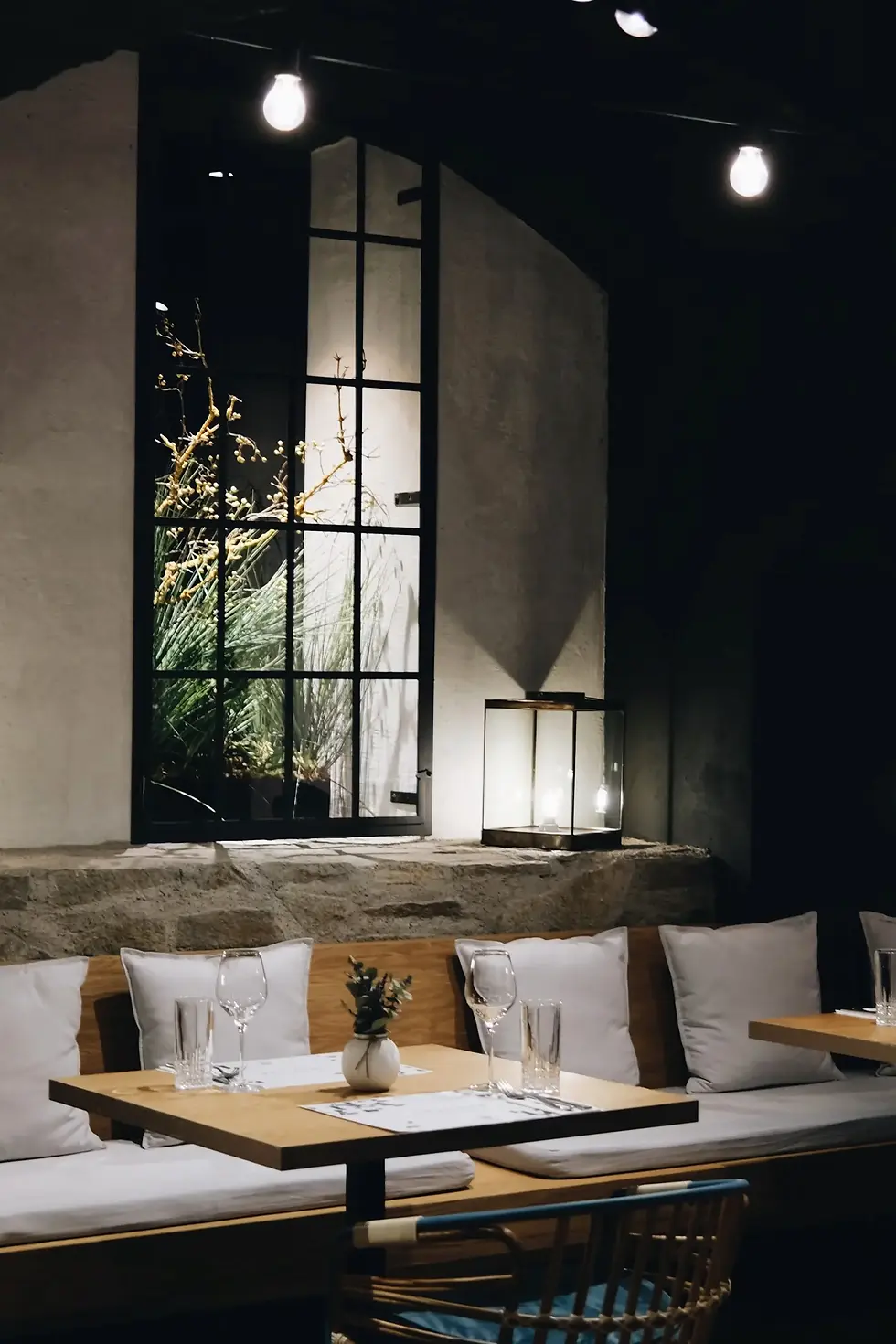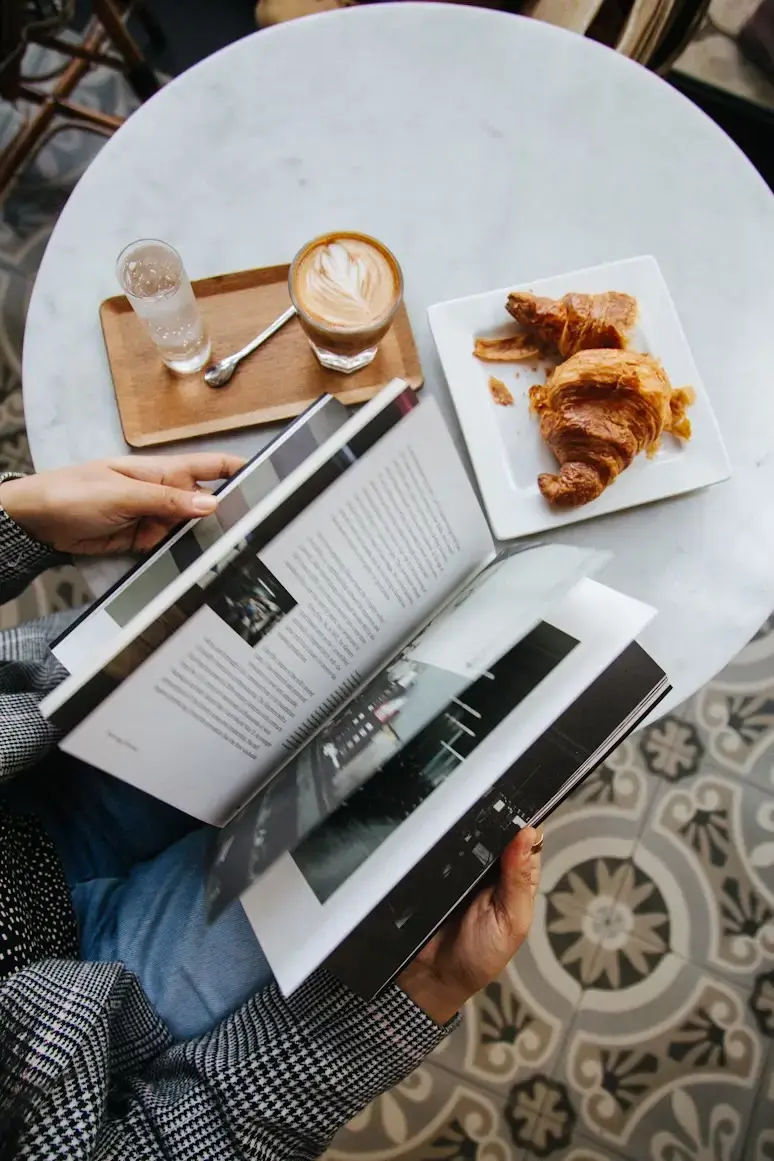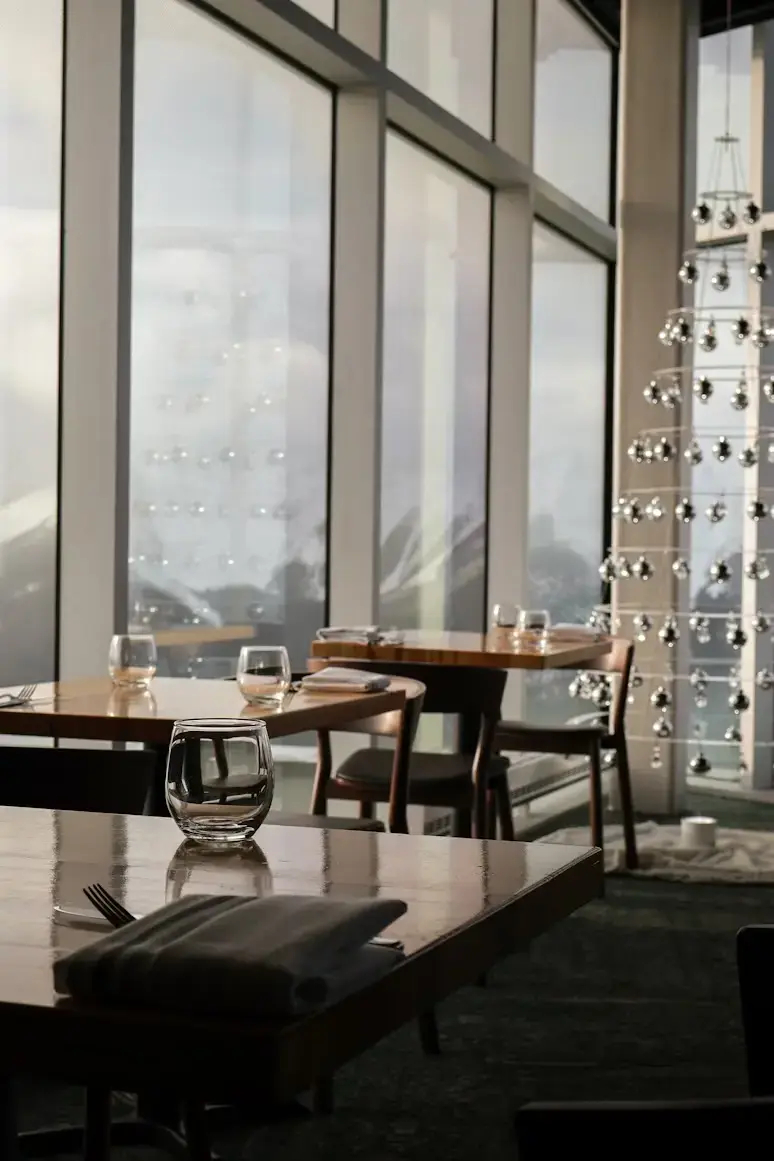The Return of Art Deco: Retro Glam in Modern Hotel Rooms
- Home Staging Portugal
- Aug 8
- 8 min read
In the ever-evolving landscape of hospitality design, few movements have captured the imagination quite like the resurgence of Art Deco in 2025. This iconic design style, which originally flourished in the 1920s and 1930s, is experiencing a remarkable renaissance in modern hotel rooms, bringing with it an irresistible blend of glamour, sophistication, and theatrical luxury that today's travelers find absolutely magnetic.

The revival isn't simply about nostalgia – it's about answering a contemporary desire for spaces that feel genuinely special and transformative. In an era where travelers seek experiences that transcend the ordinary, Art Deco's bold geometric patterns, rich materials, and unapologetic luxury provide the perfect antidote to minimalist fatigue. Hotels worldwide are discovering that guests don't just want comfortable accommodations; they want to step into a world that feels like a carefully curated fantasy.
This modern interpretation of Art Deco doesn't simply copy the past – it reimagines it through a contemporary lens, incorporating sustainable materials, smart technology, and current lifestyle needs while maintaining the movement's signature sense of drama and glamour. The result is a design approach that feels both timeless and utterly relevant to our current moment.
The Allure of Geometric Luxury
At the heart of the Art Deco revival is the movement's signature geometric aesthetic, which translates beautifully to modern hotel room design. Contemporary interpretations feature bold zigzag patterns in carpeting and wallpaper, sunburst motifs incorporated into lighting fixtures, and stepped geometric forms in furniture silhouettes.
Hotels are embracing these patterns not as overwhelming dominant themes, but as sophisticated accents that add visual interest and depth. A geometric-patterned accent wall behind the bed, inlaid wood flooring in chevron or herringbone patterns, and furniture with stepped or angular silhouettes all contribute to the Art Deco atmosphere while maintaining the clean lines that modern travelers appreciate.
The key to success lies in balance – using geometric elements as statement pieces rather than overwhelming the entire space. A single wall featuring a dramatic geometric wallpaper, paired with simpler furnishings in complementary colors, creates visual impact without feeling busy or chaotic. This approach allows the Art Deco elements to shine while ensuring the space remains restful and functional.
Modern technology has also enhanced the possibilities for geometric design. LED lighting systems can create geometric light patterns on walls and ceilings, while custom-manufactured furniture can achieve the precise angles and proportions that define the Art Deco aesthetic more easily than ever before.
Luxurious Materials Making a Statement
One of the most compelling aspects of the Art Deco revival is the return to sumptuous, tactile materials that immediately communicate luxury and quality. Velvet upholstery in jewel tones, polished marble surfaces, brushed brass fixtures, and lacquered wood furniture all contribute to creating spaces that feel indulgent and special.
Contemporary hotels are sourcing these materials with modern sensibilities, often choosing sustainable alternatives or locally-sourced options that maintain the luxurious feel while aligning with current environmental consciousness. Recycled brass fittings, responsibly-sourced marble, and eco-friendly velvet alternatives prove that luxury and sustainability can coexist beautifully.
The layering of materials is particularly important in modern Art Deco interpretations. A successful design might combine a plush velvet headboard with sleek marble nightstands, brass accent lighting, and glossy lacquered furniture. This material mixing creates visual and tactile richness that invites guests to touch and explore their surroundings, enhancing the overall sensory experience of the space.
Hotels are also discovering that these rich materials photograph exceptionally well, creating Instagram-worthy moments that help drive social media engagement and bookings. The interplay of light on polished surfaces, the depth of color in quality fabrics, and the gleam of well-crafted metal fixtures all contribute to creating spaces that are as photogenic as they are comfortable.
Color Palettes: Bold Jewel Tones and Metallic Accents
The color story of modern Art Deco hotel rooms is perhaps where the style's theatrical nature is most evident. Deep emerald greens, rich sapphire blues, warm amber golds, and dramatic black create sophisticated palettes that feel both luxurious and intimate.
These bold color choices serve multiple purposes in hotel design. They create memorable, distinctive spaces that help differentiate one property from another, they photograph beautifully for marketing and social media purposes, and they create an immediate sense of arrival and transformation for guests stepping out of their everyday environments.
Contemporary interpretations often anchor these bold colors with neutral elements – cream or white walls, natural wood tones, or soft gray textiles – to prevent the spaces from feeling overwhelming. A room might feature a dramatic emerald green accent wall behind the bed, complemented by brass fixtures and white bedding, creating a balance between drama and restfulness.
Metallic accents play a crucial role in tying these color schemes together. Brass, copper, and gold finishes add warmth and glamour, while silver and chrome provide cooler, more modern touches. The key is consistency – choosing one or two metallic finishes and using them throughout the space to create cohesion and sophistication.

Furniture with Dramatic Silhouettes
Art Deco furniture is characterized by bold, sculptural forms that make strong visual statements. Modern hotel rooms are incorporating pieces that reference classic Art Deco silhouettes while meeting contemporary comfort and functionality standards.
Curved and streamlined furniture forms are particularly popular, from rounded armchairs that echo the period's emphasis on aerodynamic design to sleek nightstands with stepped geometric profiles. Upholstered pieces often feature bold contrast piping or button tufting that adds visual interest and references traditional upholstery techniques.
The scale of furniture is also important in creating authentic Art Deco atmosphere. Pieces tend to be substantial and commanding, making strong visual statements rather than blending into the background. A large, dramatic armchair in rich velvet, a substantial writing desk with geometric inlays, or an oversized mirror with a sunburst frame all contribute to the sense of theatricality that defines the style.
Modern interpretations also incorporate contemporary needs seamlessly. Storage ottomans hide modern amenities, nightstands include integrated charging stations, and seating areas are designed to accommodate laptops and mobile devices while maintaining their period-appropriate aesthetic appeal.
Lighting: The Drama of Illumination
Perhaps no element is more crucial to successful Art Deco design than lighting, and modern hotels are embracing this aspect with particular enthusiasm. Statement lighting fixtures serve as both functional elements and artistic focal points, creating the dramatic atmosphere that defines the style.
Geometric chandeliers featuring stepped or radiating forms, table lamps with sculptural bases in metallic finishes, and wall sconces that cast interesting patterns all contribute to the Art Deco ambiance. Modern technology enhances these effects through dimmable LED systems that can adjust color temperature throughout the day, creating different moods from energizing morning light to warm, intimate evening ambiance.
The layering of light sources is particularly important in Art Deco-inspired spaces. Rather than relying on a single overhead fixture, successful designs incorporate multiple light sources at different heights and intensities. Floor lamps, table lamps, accent lighting, and architectural lighting work together to create depth and visual interest while ensuring guests have appropriate lighting for all activities.
Backlit elements are also becoming popular in modern Art Deco interpretations. Backlit headboards, illuminated geometric wall panels, and lit architectural details add drama and sophistication while providing gentle ambient lighting that enhances the overall atmosphere.
Art Deco Accessories and Decorative Elements
The details make all the difference in creating authentic Art Deco atmosphere, and modern hotels are paying careful attention to accessories and decorative elements that support the overall design theme. Vintage-inspired artwork featuring geometric patterns or stylized natural motifs, decorative objects with stepped or curved silhouettes, and textiles with period-appropriate patterns all contribute to the immersive experience.
Mirrors are particularly important in Art Deco design, both for their practical function and their ability to enhance the sense of glamour and spaciousness. Sunburst mirrors, geometric-shaped mirrors with metallic frames, and large statement mirrors all help create the theatrical atmosphere that defines the style.
Contemporary hotels often commission custom artwork that references Art Deco motifs while incorporating local cultural elements or contemporary themes. This approach allows properties to embrace the style while maintaining their unique identity and connection to place.
Textiles also play a crucial role in completing the Art Deco look. Throw pillows with geometric patterns, curtains in rich fabrics with metallic thread details, and area rugs featuring period-appropriate motifs all add layers of visual interest and tactile luxury.
The Psychology of Art Deco Appeal
Understanding why Art Deco resonates so strongly with contemporary travelers reveals important insights about current cultural desires and aspirations. The style emerged during the Jazz Age, a time of optimism, innovation, and celebration of modernity – themes that feel particularly relevant as we navigate our own period of technological advancement and cultural change.
Art Deco represents a form of luxury that feels earned and celebratory rather than ostentatious or exclusive. It's luxury with personality, luxury that tells a story, luxury that invites participation and enjoyment. This aligns perfectly with contemporary travel trends that emphasize experience over possession and transformation over simple accommodation.
The style also offers a form of escapism that feels sophisticated and intentional. Guests staying in Art Deco-inspired rooms aren't just sleeping in a different bed – they're stepping into a different era, embracing a different version of themselves, and participating in a carefully crafted fantasy that enhances their travel experience.
Balancing Authenticity with Modern Comfort
The most successful modern Art Deco hotel rooms are those that capture the essence and atmosphere of the period while incorporating all the comfort and convenience features that contemporary travelers expect. This balance requires careful consideration of both aesthetic and functional elements.
Climate control systems are seamlessly integrated into period-appropriate design elements, high-speed internet and charging capabilities are built into furniture pieces that maintain their vintage aesthetic, and modern bathroom facilities are designed to complement rather than compete with the Art Deco atmosphere in adjacent spaces.
The goal is to create spaces that feel authentically period-appropriate while functioning flawlessly for modern needs. This might mean hiding contemporary technology within vintage-inspired casework, using modern materials that mimic the appearance of period materials, or designing custom furniture that incorporates contemporary ergonomic principles within Art Deco silhouettes.
Regional Interpretations and Cultural Fusion
One of the most exciting aspects of the current Art Deco revival is how different regions and cultures are interpreting and adapting the style to reflect local traditions and preferences. Hotels in Asia might incorporate traditional lacquerwork techniques into Art Deco furniture forms, while properties in Latin America might emphasize the vibrant colors and bold patterns that resonate with local design traditions.
This cultural fusion creates unique interpretations that feel both authentically Art Deco and genuinely connected to place. A hotel in Morocco might feature traditional metalwork techniques applied to Art Deco geometric forms, while a property in Scandinavia might emphasize the clean lines and functional aspects of the style while incorporating local materials and color palettes.
These regional interpretations ensure that the Art Deco revival doesn't become homogeneous or formulaic. Each property can embrace the style while maintaining its unique identity and cultural connection, creating distinctive experiences that reflect both global design trends and local character.

The Future of Art Deco in Hospitality
As we look toward the future of hospitality design, the Art Deco revival shows every sign of continuing evolution rather than simple repetition. Emerging technologies are creating new possibilities for incorporating geometric patterns through projection mapping, interactive surfaces, and responsive lighting systems that change based on occupancy and time of day.
Sustainability considerations are also driving innovation in Art Deco interpretations, with designers finding new ways to achieve the luxurious look and feel of traditional materials through eco-friendly alternatives. Recycled metals, sustainable textiles, and locally-sourced materials are being used to create authentic Art Deco atmosphere while meeting contemporary environmental standards.
The style's emphasis on craftsmanship and quality also aligns well with growing consumer interest in authenticity and durability over disposable trends. Art Deco hotel rooms represent an investment in creating lasting, memorable experiences rather than following fleeting fashion trends.
As the hospitality industry continues to evolve, the Art Deco revival represents more than just a design trend – it's a return to the idea that luxury travel should be transformative, memorable, and genuinely special. In a world of increasing standardization and digital connectivity, these glamorous, theatrical spaces offer guests the opportunity to step into a different reality and experience a different version of themselves, if only for the duration of their stay.
).png)



Comments